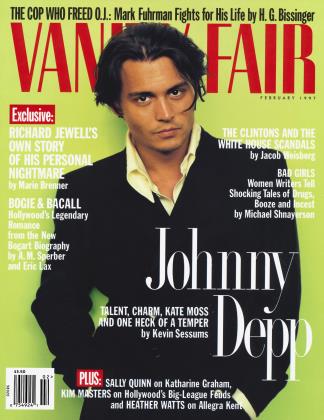Sign In to Your Account
Subscribers have complete access to the archive.
Sign In Not a Subscriber?Join NowQUEENS OF THE HIGH C
The two sopranos thrilling Metropolitan Opera audiences in New York this season, Redée Fleming, and Ruth Ann Swenson, are bidding fair to become the great divas of. the next century
DAVID DANIEL
Arts
FOR DETAILS, SEE CREDITS PAGE
Opera-lovers can count on two contenders for the next millennium: Renee Fleming and Ruth Ann Swenson, the radiantly beautiful and supremely gifted sopranos. Both Americans in their 30s, they made their Metropolitan Opera debuts in the same year, 1991, and have become major attractions in opera houses and concert halls around the globe. But there the similarities end.
Fleming's juicy lyric soprano voice, with its ravishing eloquence, is also capable of brilliance and weight. Soaring above the orchestra, it takes on a bright sheen which vocal fanatics refer to as "metal." She is a class act—patrician, lavishly feminine—and her style and presence recall Eleanor Steber and Elisabeth Schwarzkopf (with whom she studied). She specializes in Mozart and Richard Strauss but also performs Rossini, Massenet, and Berg, not to mention Verdi. In her fifth season at the Met, singing opposite Placido Domingo on opening night, she stole reviews from the great Otello of our time.
Fleming keeps a schedule that makes Madeleine Albright look sedentary. This month she sings the title role in Thais in Nice. She's back at the Met during March, April, and May for Faust and Rusalka, at Carnegie Hall with Andre Previn in March, and at Avery Fisher Hall for a PBS telecast in April. As she says, "This is 1997. Isn't it perfectly normal for a woman to juggle 65 performances a year, two little girls, and an actor-husband, and still run a household?"
Fleming is a class actpatrician, lavishly feminine. Swenson is a lyric coloratura with phenomenal range and flexibility.
FOR DETAILS, SEE CREDITS PAGE
wenson is a soubrette, a lyric coloratura soprano possessed of a clear voice of phenomenal range, accuracy, and flexibility. She has made a specialty of the youthful roles opera fans call the "inas"—Zerlina in Don Giovanni, Rosina in The Barber of Seville, Adina in L'Elisir d'Amore, Norina in Don Pasquale. Vocally she resembles the young Beverly Sills. Swenson is partial to comic parts, yet some of her biggest successes have been as tragic heroines—Gilda in Rigoletto, Gounod's Juliette. Her gifts have led her inevitably to the bel canto parts of the late 18th and early 19th centuries, but she also performs works by Schoenberg and Stravinsky. This month she is singing one of the most difficult roles in the high-soprano repertory, Elvira in Bellini's I Puritani, at the Met, and she has plans to sing another, Donizetti's Lucia di Lammermoor, in San Francisco in 1999. Swenson knows that the stakes are high for her in I Puritani. Sutherland and Pavarotti brought the operatic world to its knees in this very production. "I think of Callas and Sutherland all the time while working on this part," she says. "I revere them. They brought / Puritani back after nearly 100 years of neglect. It's a very, very difficult opera. It's like walking a tightrope." □
 View Full Issue
View Full Issue


















Subscribers have complete access to the archive.
Sign In Not a Subscriber?Join Now